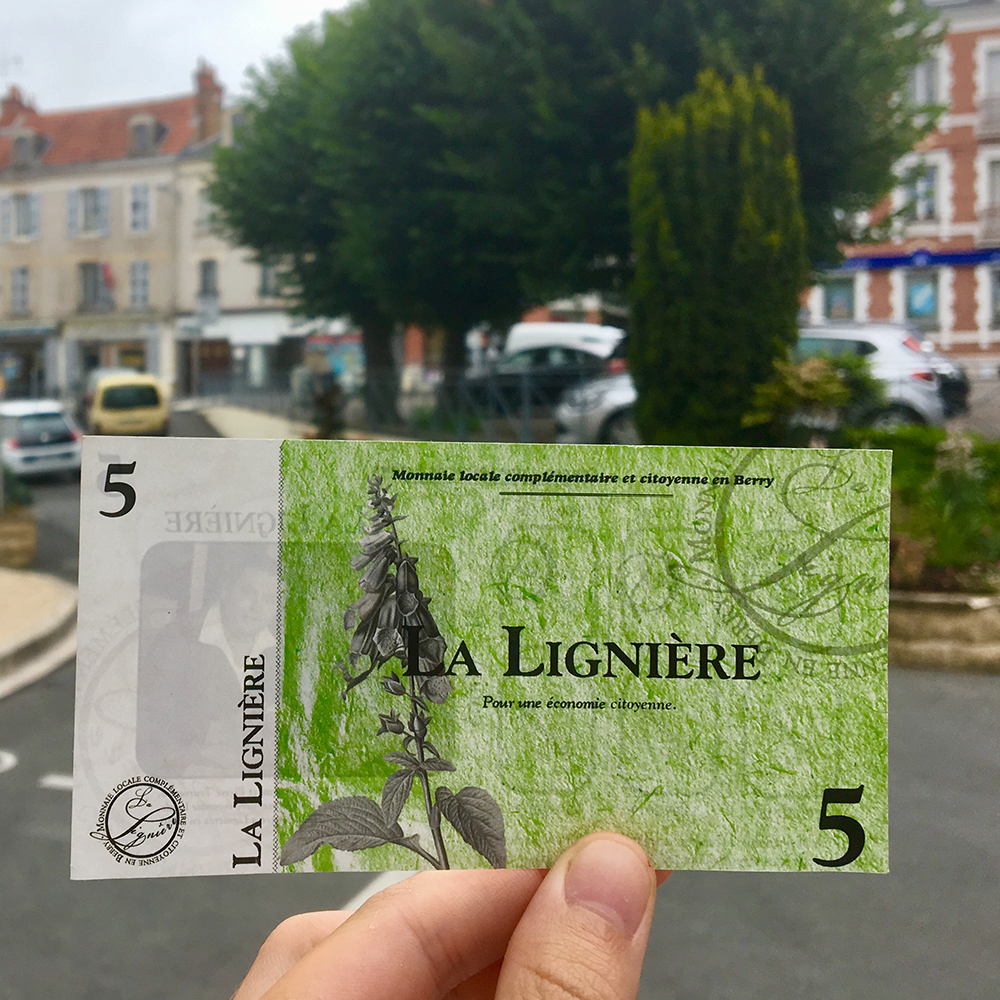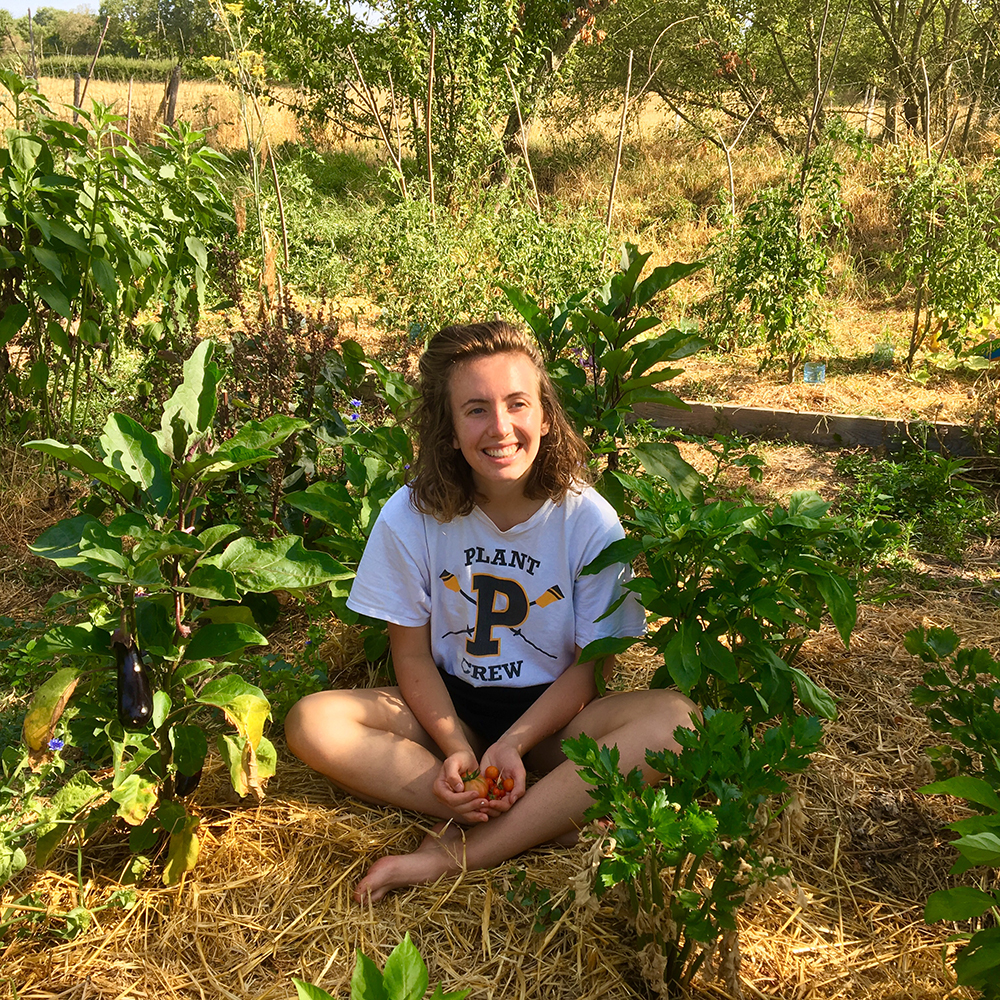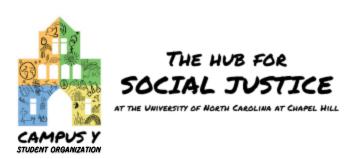
The Global Engagement Fellowship (GEF) supports UNC Chapel Hill students conducting international social justice-oriented summer projects. The following blog was written by GEF recipient Val Lucas, a rising junior majoring in Economics and Global Public Health.
My summer drew me deep into the annals of currency legitimacy, email templates, and social justice. Currency choice is political in this region of France, Berry Province, and my hosts, Jean-Claude and Marie-Jo, along with a small group of people are working to shift the choices people make to be better for the community and the environment.
Part of my community experience this summer in Berry Province, a very rural area of France, has been working on a local currency system, the Lignière. The Lignière the same size as a euro, and each Lignière is worth exactly a euro. A fund in a community bank backs of the Lignière and ensures it retains value. For every Lignière put into circulation, there is a euro in the community bank, effectively taking a euro out of circulation and providing monetary stability to the Lignière. Laws in France changed in 2014 to allow local currencies to have a legal place in the monetary system; the Lignière was created two years later, in 2016. The Lignière is “fondante” or melting. If the holder of a Lignière doesn’t spend it within six months (and stamp it appropriately in the process), it loses 2% of its value. If another six months go by and the holder hasn’t spent it again, the Lignière loses another 2% of its value.
The melting aspect of the currency is a critical part of its social justice function. For one, it encourages people to continue using the Lignière, essentially keeping it in circulation. It also discourages people from using the currency to build wealth, which has some fairly straightforward social justice implications. Building wealth and capital creates social inequity; it’s the driving force behind socioeconomic inequality. Related to deterring wealth building, the melting quality also makes it more difficult to use the Lignière for speculative purposes. To understand why speculative uses of money tend to lead to unjust outcomes, look at the housing market. Housing ought to be a human right. Everyone needs housing. However, people buy houses not just to live in but also to build wealth, increasing the speculative value. Since houses are an effective store of value and usually increase in value over time, it is worth an investor’s while to buy one, never use it, and sell it at a profit. A house can sit empty, while people experience homelessness on the same block. This phenomenon is particularly common in quickly gentrifying neighborhoods, where community members are rapidly displaced a house is a very lucrative investment. The Lignière aims to show that we can use money simply to facilitate transactions without speculative intent, promoting social justice within the community.
 Localness strengthens the social justice function of the Lignière, encouraging people to buy from sources near to them and reducing the carbon footprint of consumption. Food that doesn’t travel a long way to reach you uses less diesel to get to its final destination. Consuming locally is also tied to the idea of consuming no more than you produce, a fundamental tenant of sustainability. All in all, the Lignière creates various positive social justice opportunities where the community can invest.
Localness strengthens the social justice function of the Lignière, encouraging people to buy from sources near to them and reducing the carbon footprint of consumption. Food that doesn’t travel a long way to reach you uses less diesel to get to its final destination. Consuming locally is also tied to the idea of consuming no more than you produce, a fundamental tenant of sustainability. All in all, the Lignière creates various positive social justice opportunities where the community can invest.
Community members, (including my hosts, Jean-Claude and Marie-Jo) have worked to thoughtfully design the Lignière, but implementing the currency and encouraging use has been a challenge. The leadership of the Lignière has decided to focus on recruiting local merchants first, then expanding the base of users. This strategy makes sense, considering the merchants will eventually become users and spend the Lignières they’ve earned. Recruitment has tended to be relatively low-tech so far. One morning in July, I wandered through a farmer’s market with Jean-Claude, distributing information pamphlets on the Lignière and talking with local merchants about how to sign up. Some seemed fairly skeptical, but others were willing to look engage with us.
After the experience, I chatted with Jean-Claude about the adherence to the Lignière. Only about fifty merchants had signed on and agreed to accept the Lignière in addition to euros at their business. The number of merchants who sign on is very important for the legitimacy and usability of the Lignière. Customers need to know that if they venture out into Berry Province with a pocket full of Lignières, they will be able to spend it. Otherwise, they won’t bother to convert some of their euros into Lignière. Additionally, it’s much easier to convince merchants to accept the Lignière if a lot have already done so. Getting more merchants on board creates a virtuous cycle where merchants are more likely to sign up to receive the Lignière if they know that others have already done so. Perhaps the dearth of merchants who had signed on was simply a matter of time. The Lignière has only existed for a mere three years, and it’s certainly a long process to get a merchant signed on to the system. However, part of the challenge was the Lignière’s advocates’ singularly in-person approach to recruiting merchants. While approaching merchants in person adds to the credibility and local touch of the organization, it is time-intensive and may not be as effective as hoped. Not everyone who works at a booth at a farmer’s market has authority or knowledge of the financial aspect of the business, and in those instances the pitch is somewhat ineffective. In addition, the farmer’s market may not be the best place to approach a business owner; the owner is likely busy focusing on customers.
While doing in-person outreach can be effective in some circumstances, I developed another approach to attract local business owners to join the Lignière. I drafted an email template that Jean-Claude, Marie-Jo, and others could use to write emails to merchants. The template explains the function and purpose of the Lignière and invites the merchants to join. To add legitimacy, the email includes links to the Lignière’s website (which you, dear reader, can also see at www.monnaielocaleberry.fr) and social media. Most businesses today have well-attended inboxes, and the email format gives the business owners time to do research on their own before responding. The email approach also allows the advocates for the Lignière to create on a system to reach out to every possible local merchant with an email address. We began making lists of businesses, researching the email of the merchants, and compiling the information in a spreadsheet. Ultimately, my hosts could send emails out to a lot of people very quickly, which was a huge success. We’re still counting the responses they get, but it seems to be working so far!
I am very grateful to the Global Engagement Fellowship for the opportunity to meet so many community leaders and get to know my hosts. We constantly search for ways to break out of the constrictiveness of the traditional financial system. Community banks, emergency financial aid, and now this local currency system, the Lignière, are ways to throw off the financial oppression of marginalized peoples. I feel very fulfilled being a part of this big, structural way of fighting the system.
